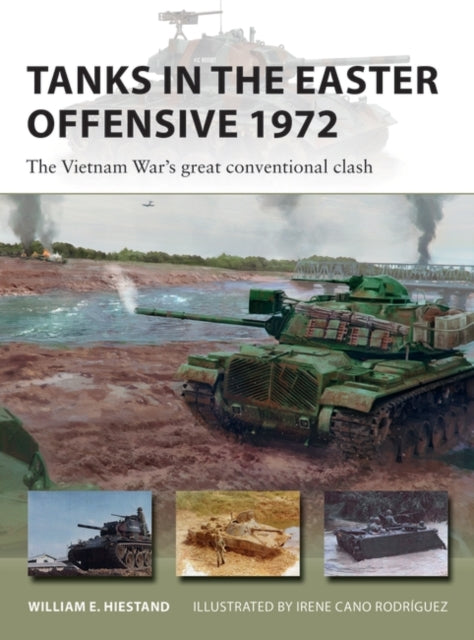Tanks in the Easter Offensive 1972
Usually shipped within 24 hours
UK deliveries from £5.95
Delivery & Returns
Delivery & Returns
We use the Royal Mail, DHL Express or UPS for our customers. For UK addresses, deliveries under 10kg are a standard £4.95 via Royal Mail Tracked 48 Service. For orders over 10kg and overseas customers, postage is calculated for you at checkout once you have entered your postal address. This price, does not include any potential custom charges that may apply, depending on the product or destination, as every country has very different import duties / taxes. Online exclusive products (such as trainers) will be delivered to you directly from the printer, separate from other items in your order, but your postage fee covers ALL items in your order.
If you are unhappy with your purchase, please email shop@tankmuseum.org within fourteen (14) working days of receiving your goods, and return it to us at the address below, in its original condition, unopened (with any seals and shrink-wrap intact) and we will issue you a full refund or replace it. Goods must be returned at your own cost. If the item is faulty, you do not need to return it, we will send you a replacement free of charge.
Description
Description
The Vietnam War's great conventional clash by William E. Hiestand
This study explains how the armies of North and South Vietnam, newly equipped with the most modern Soviet and US tanks and weaponry, fought the decisive armoured battles of the Easter Offensive.
Wearied by years of fighting against Viet Cong guerrillas and North Vietnamese regulars, the United States had almost completely withdrawn its forces from Vietnam by early 1972. Determined to halt the expansion and improvement of South Vietnamese forces under the U.S "Vietnamization" program, North Vietnam launched a major fourteen-division attack in March 1972 against the South that became known as the "Easter Offensive." Hanoi's assault was spearheaded by 1,200 tanks and was counteracted on the opposite side by Saigon's newly equipped armoured force using U.S. medium tanks. The result was ferocious, fighting between major Cold War-era U.S. and Soviet tanks and mechanized equipment, pitting M-48 medium and M-41 light tanks against their T- 54 and PT-76 rivals in a variety of combat environments ranging from dense jungle to urban terrain. Both sides employed cutting-edge weaponry for the first time, including the U.S. TOW and Soviet 9M14 Malyutk wire-guided anti-tank missiles.
This volume examines the tanks, armoured forces and weapons that clashed in this little-known campaign in detail, using after-action reports from the battlefield and other primary sources to analyse the technical and organizational factors that shaped the outcome. Despite the ARVN's defensive success in October 1972, North Vietnam massively expanded its armour forces over the next two years while U.S. support waned.
This imbalance with key strategic misjudgements by the South Vietnamese President led to the stunning defeat of the South in 1975 when T54 tanks crashed through the fence surrounding the Presidential palace and took Saigon on 30 April 1975.
![Tanks in the Easter Offensive 1972 Book [variant_option4]](http://tankmuseumshop.org/cdn/shop/products/9781472849021.jpg?v=1748337993&width=1214)

![Tanks in the Easter Offensive 1972 Book [variant_option4]](http://tankmuseumshop.org/cdn/shop/products/9781472849021.jpg?v=1748337993&width=88)
![Tank Museum Playing Cards Game [variant_option4]](http://tankmuseumshop.org/cdn/shop/files/ProductShoot_10_10_2025035.jpg?v=1760358498&width=176)
![Tank Museum Wrapping Paper - Two sheet pack Wrapping Paper [variant_option4]](http://tankmuseumshop.org/cdn/shop/products/Wrapp_Paper_All.jpg?v=1748337915&width=176)
![Tanks in the Easter Offensive 1972 Book [variant_option4]](http://tankmuseumshop.org/cdn/shop/products/9781472849021.jpg?v=1748337993&width=640)



